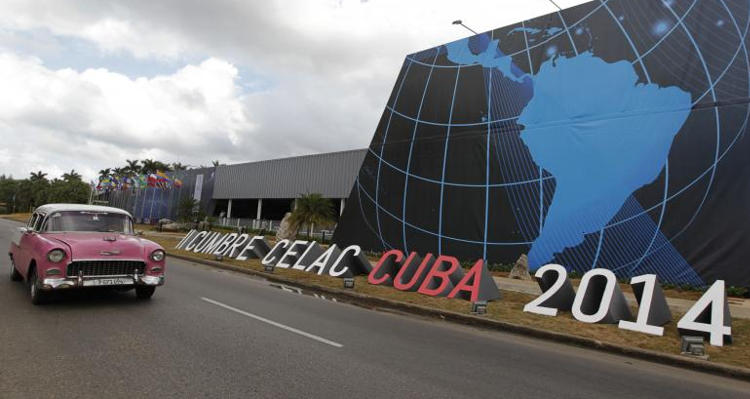
CELAC: A paradigm shift
By January 25, people around the world were buzzing about a major event taking place in Havana, but few people in the United States know what that’s all about. Yet on the faraway Persian Gulf in Qatar, the Gulf Times newspaper carried the headline, “DIPLOMATIC COUP FOR CUBA WITH HAVANA TO HOST AMERICAS SUMMIT”. China’s Xinhua and the “Voice of Russia” reported that Latin American and Caribbean leaders were beginning to arrive for the Summit meeting of the Community of Latin American and Caribbean States known as CELAC.

CELAC includes all 33 states of Latin America and the Caribbean—that is, all the states of the Western Hemisphere except for the United States and Canada. The CELAC Summit has become an alternative to the Organization of American States – the OAS – which is based in Washington. CELAC’s Summit meetings are free of Washington’s domination.
This is a paradigm shift of historical importance. How did it happen?
Just a few years ago, the OAS was the major international organization of the Western Hemisphere. Its members include all 35 nations of the Western Hemisphere but Cuba was suspended in 1962 and was not allowed to attend meetings. In 2009, the OAS, having grown to include members not so used to following Washington’s dictate, voted to end Cuba’s suspension. But President Obama later made it clear he would not attend the 2012 OAS Summit if the president of Cuba attended.
Meanwhile, Latin America and the Caribbean States were creating a different paradigm. CELAC was formally established in 2011 in Venezuela, with the initiative of the late Hugo Chávez, who was then the president of Venezuela. Chile became the first rotating presidency.
Then, at the OAS Summit in 2012, the Final Declaration demanded an end to the U.S. trade embargo against Cuba and an end to Cuba’s expulsion. The United States and Canada vetoed. So that OAS Summit ended without a Final Declaration and with the status of the OAS Summit in 2015 in question.
In 2013, CELAC held its second summit meeting in Chile, and Cuba was named to the rotating presidency, which is why this year’s Summit was held in Havana.
Unlike the OAS, CELAC offers its members a chance for unity that is obviously unavailable in the OAS.
For example, consider one of CELAC’s main goals – to declare Latin America and the Caribbean a Zone of Peace and of freedom from nuclear weapons. This means that the 33 member states will aim at solving conflicts through dialogue and negotiation. All CELAC members had long ago signed the Tlatelolco treaty which bans production, use, or storage of nuclear arms in Latin America and the Caribbean. Thus CELAC is already a Nuclear Free Zone while the OAS, on the other hand, has one member which not only has nuclear weapons but has also used those weapons. Washington would never agree to become part of a region with no nuclear weapons.
CELAC also has total unanimity in opposition to the U.S. trade embargo against Cuba. Canada also opposes that embargo. But Washington, of course, does not.
At the opening of the Summit on January 28, Cuban President Raúl Castro called for a moment of silence in tribute to that great leader, Hugo Chávez who died of cancer last March. He said Chávez was a fervent promoter of independence, integration, solidarity and unity for Latin America and the Caribbean.
President Castro mentioned numerous challenges for CELAC, including climate change, Puerto Rican independence, Argentine sovereignty in the Malvinas Islands (known in English as the Falklands), an end to the U.S. trade embargo, and — most important — the necessity of eliminating inequality, poverty, and hunger.
The Declaration of Havana, at the close of the Summit on January 29, emphasizes CELAC’s opportunity for dialogue and unity in order to cooperate “for the wellbeing of our peoples.”
Now the rotating presidency has been transferred to Costa Rica. It is up to the peoples of Latin America and the Caribbean to continue to build and improve the Community of Latin American and Caribbean States with the vision of Simón Bolívar, José Martí, and Hugo Chávez.
Jane Franklin is the author of Cuba and the United States: A Chronological History. Some of her work is available at http://www.janefranklin.info

